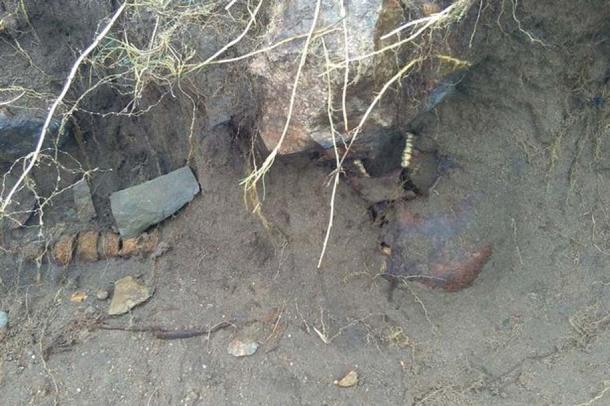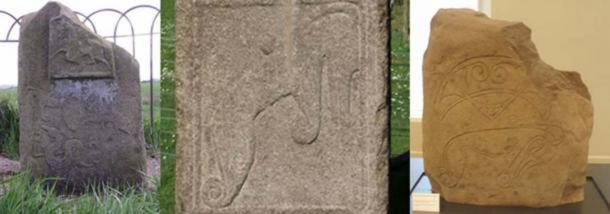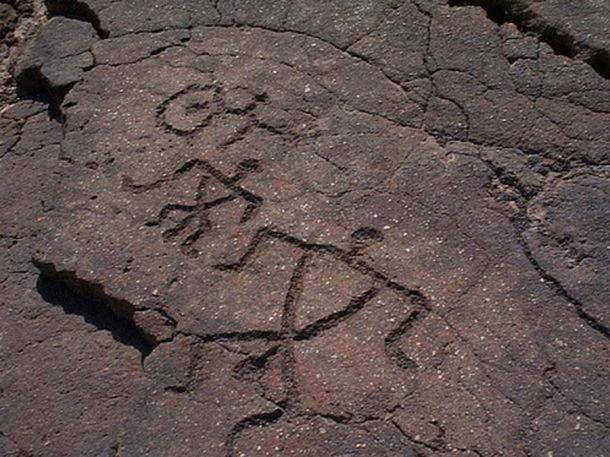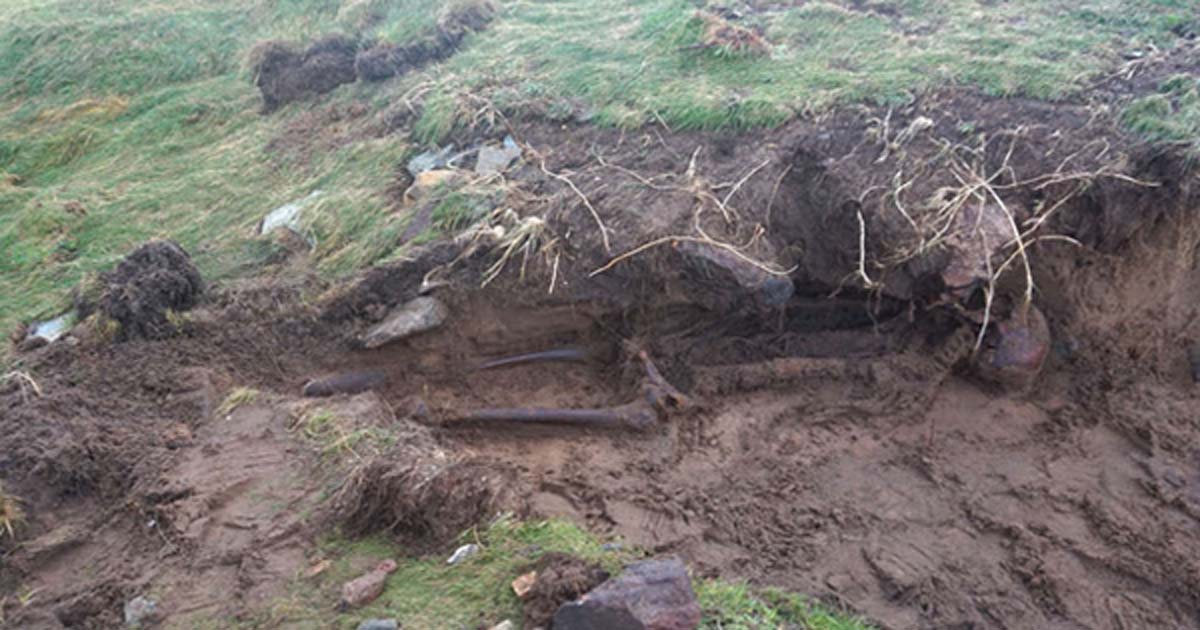After the Storm: Hurricane Ophelia Reveals Ancient Mystery Skeleton in Ireland
Hurricane Ophelia sent strong waves beating against a coastal walkway in Ireland. This sped up erosion and revealed an unexpected discovery to people walking in the area the next day – human remains. Preliminary analysis suggests that the body may have been buried in the Iron Age, but this is only the second time researchers have heard of any ancient burials in the area.
The Irish Daily Mirror reports the human remains were unearthed at Forlorn Point, Kilmore Quay, Co Wexford, Ireland. The skeleton’s discoverers alerted authorities and the State Pathologists Office and a Forensic anthropologist were soon at the scene. They established the remains were not modern and were not washed in by the tide.
The area around the burial was sealed off and work began to extract the remains, which are currently on their way to Dublin for archaeological testing. The National Museum is taking custody of the skeleton following the examinations. It has been suggested that the site where the body was found may contain an ancient burial ground.
- Sandstorm in Iran Reveals Remnants of What is Possibly an Ancient City
- Striking Pictish Dragon Carving Discovered During Storms in Orkney

Possibly Iron Age human remains were found following Hurricane Ophelia. Image courtesy of Jim Campbell. Visit Jim Campbell Photographer Facebook Page for more images.
This unexpected discovery has also led locals to wonder what other archaeological sites may surround them. It has brought a similar discovery from two years ago back to mind too. That find was made at Ballyteigue Bay, a location not far from the recent discovery. County councillor Jim Moore told the Irish Daily Mirror, “That was another very old skeleton. At this point we do not know if there is any link between the two. We have to consider know whether there is a need for further archaeological examination.”
When the human remains were first revealed, there was some worry they pertained to someone who had been killed in the storm. Photographer Jim Campbell went to the location to take some photos. He told IFLScience “I was surprised. My first reaction was ‘Oh no’, thinking someone went missing. But as the day progressed we realised that this was an ancient skeleton.”
This is definitely not the first instance of nature revealing surprising ancient sites and artifacts.
In 2015, Ancient Origins reported that two bronze cannons washed ashore near Streedagh in County Sligo, Ireland due to prolonged winter storms. They came from La Juliana, a merchant vessel commandeered by King Phillip II of Spain into the Spanish Armada, which sank in 1588. Researchers believe that the ship’s two companions, the La Lavia and the Santa Maria de Vision, may be near the discovery site – but still covered by the seabed.

Defeat of the Spanish Armada, 8 August 1588 by Philip James de Loutherbourg. (Public Domain)
In 2016, stormy weather revealed one of the most beautiful Pictish artifacts discovered in recent years. The 8th century carving of a Pictish dragon (also called a Pictish beast) was found by an archaeologist passing by a cliff face in Orkney, Scotland following bad weather. Archaeologists had to follow weather changes and track upcoming storms to carefully extract that unique stone.
- Huge Waves Provide Rare Glimpse of Hawaiian Petroglyphs
- Black Monday: The Deadly 14th Century Hailstorm That Killed Over 1000 Soldiers and 6000 Horses

Three carvings of the Pictish dragon: Martin's Stone ( Val Vannet/ CC BY SA 2.0 ), Maiden Stone ( CC BY SA 3.0 ), and Strathmartine Castle stone. (Catfish Jim and the soapdish/ CC BY SA 3.0 )
Sometimes, the knowledge of forthcoming weather changes can excite researchers as well. For example, it is known that huge waves that hit Hawaii during the weather phenomena known as El Niño (El Niño–Southern Oscillation (ENSO)) may reveal centuries-old petroglyphs. The window of opportunity is often short, but the appeal is all the greater for the intermittent peeps at the past.

Some Hawaiian petroglyphs. (CC BY NC 2.0)
A lack of water can also bring stunning sites to light. A 2015 drought in Chiapas, Mexico, for example, helped the ruins of a 400-year-old Spanish colonial church emerge from the depths of the Nezahualcoyotl reservoir. Tourists flocked to the site to catch a glimpse of the Temple of Santiago or Temple of Quechula.
Top Image: The skeletal remains found after stormy weather in Kilmore Quay, Ireland. Image courtesy of Jim Campbell. Visit Jim Campbell Photographer Facebook Page for more images.


















Comments
Just one more "pundit" who does not know the meaning of unique. Any serious person quits reading after seeing that.